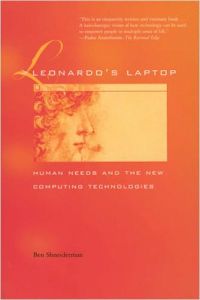Join getAbstract to access the summary!

Join getAbstract to access the summary!
Ben Shneiderman
Leonardo's Laptop
Human Needs and the New Computing Technologies
MIT Press, 2002
What's inside?
New computing is in; old computing is out. What information technology could do for you.
Recommendation
Leonardo da Vinci put people first in both engineering and art, noting that “work must commence with the conception of man.” Unfortunately, many software and hardware engineers treat the user as an annoying afterthought. Ben Shneiderman is different. Taking Leonardo as his muse, and providing a light sprinkling of biographical facts about the ultimate Renaissance Man, Shneiderman presents a simple, compelling framework for understanding the way that people want to work with information technology. This award-winning book offers a crash course in user-centered design. getAbstract recommends it to anyone who works with software, hardware or Web applications (and who doesn’t these days?). Shneiderman describes what you should demand from technology providers. If Leonardo had been a computer scientist, this is the sort of book he would have written. Here’s to Renaissance 2.0.
Summary
About the Author
Ben Shneiderman is professor of computer science and founding director of the Human-Computer Interaction Laboratory at the University of Maryland, College Park.


















Comment on this summary